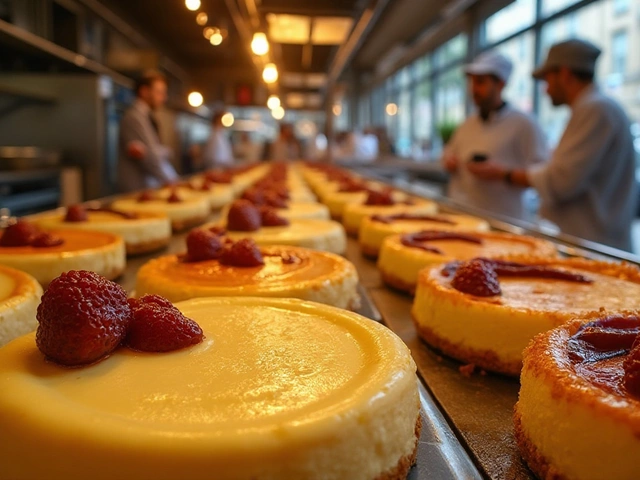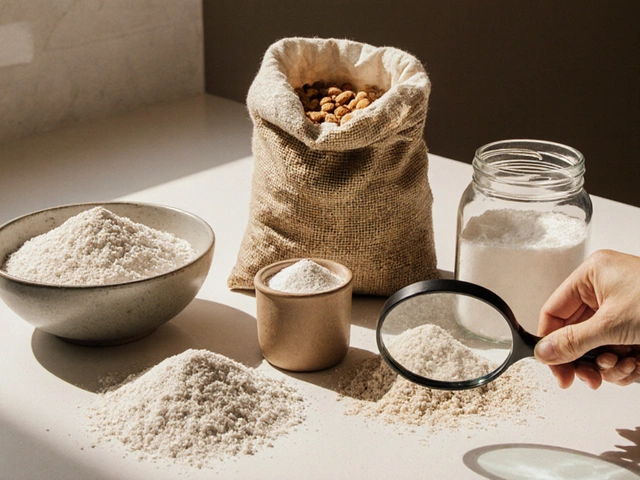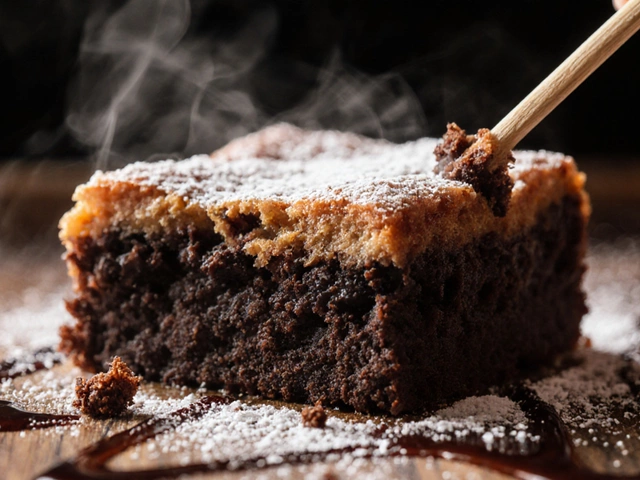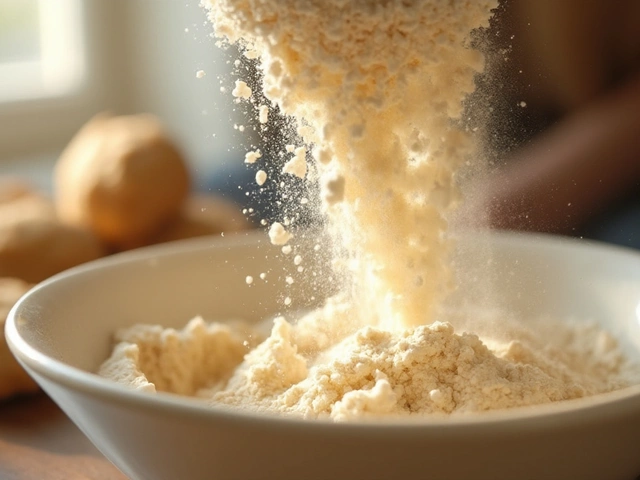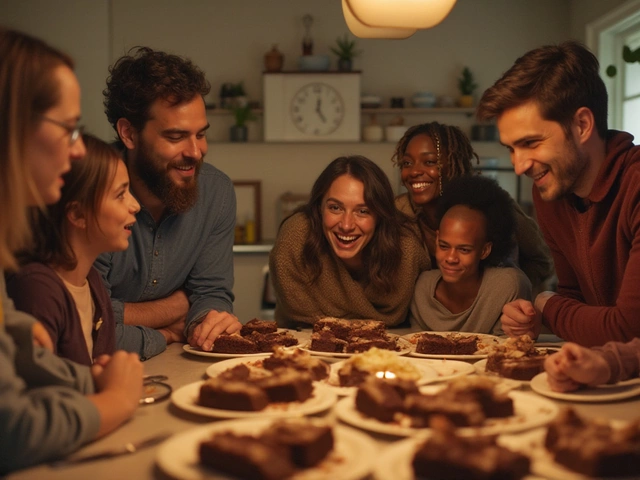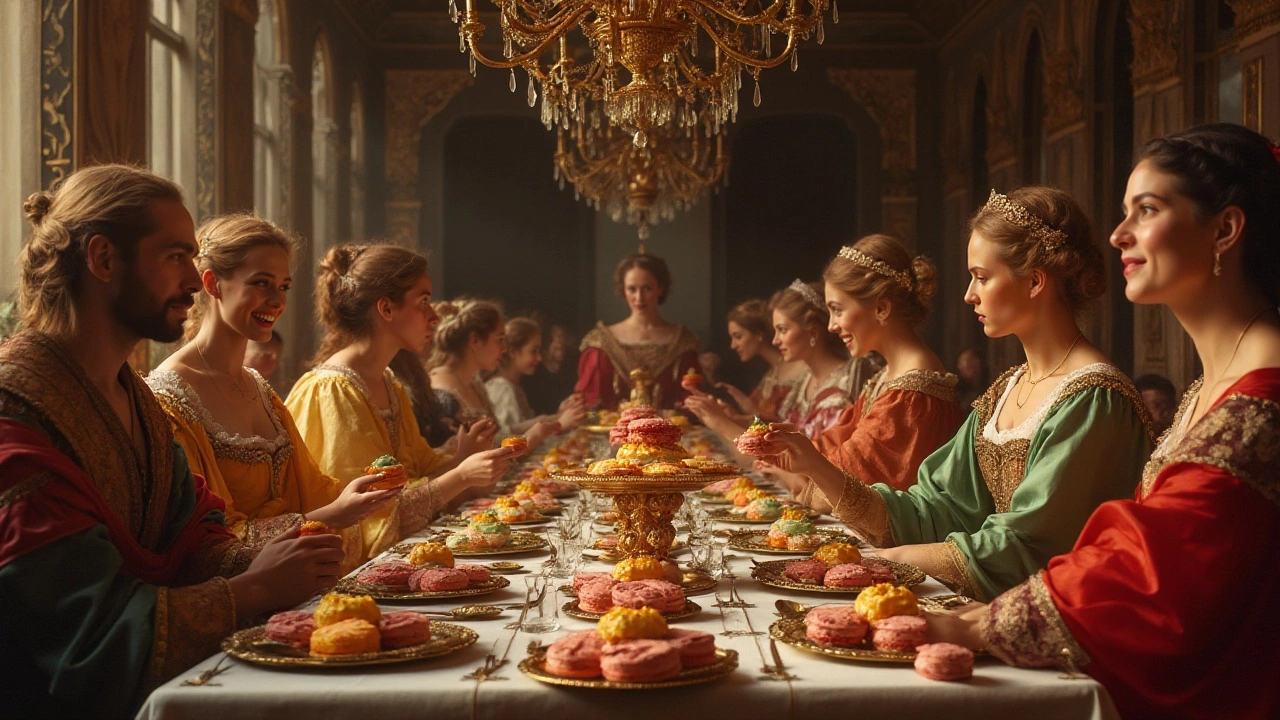
Ah, the macaron: a tantalizing morsel of meringue-based happiness that has danced across taste buds for centuries. But have you ever mused over its origins as you savored its delicate crunch? The journey of the macaron is as enticing as its flavor—a saga that begins in the heart of Italy and blossoms within French culture.
This article embarks on a flavorful exploration, piecing together the history and evolution of this elegant treat. What began as a humble almond cookie in Italy reaches its current status as the pinnacle of French patisserie. Along the way, we uncover tips and secrets from today's pastry chefs, ensuring your next baking adventure is sprinkled with a touch of history. Join us as we unfold the story of the macaron—it's a sugary journey that promises to be as delightful as the dessert itself.
- The Italian Beginnings
- French Flavors Awaken
- From the Court to the Café
- Modern Macaron Renaissance
- Secrets to Perfect Macarons
- Macarons Around the World
The Italian Beginnings
The tale of the macaron starts not in a Parisian patisserie, but across the vibrant landscapes of Italy. The term 'macaron' itself derives from the Italian word 'maccherone,' describing a culinary technique of beating egg whites to create a meringue.
The Birthplace: Venetian Roots
During the Renaissance, macarons were believed to have first been introduced in the Venetian monasteries. The simple combination of ground almonds, egg whites, and sugar resulted in a cookie that was both light and satisfying—a far cry from its modern, colorful counterpart. These early macarons did not have the familiar filling sandwiched between two shells; it was only a single almond-flavored biscuit.
The introduction of the macaron to France is ascribed to Catherine de' Medici, an Italian noblewoman who became queen of France in 1533 when she married Henry II. It was through her entourage of Italian chefs that the French dessert was born, bringing with them the technique and tradition that would soon become a staple in French cuisine.
Macarons at the French Court
By the 16th century, macarons had been incorporated into the culinary traditions of the French court. They were initially an exclusive delicacy, served to royalty and the nobility. These early versions were quite different from today's delicate creations but provided a foundation for the sumptuous variety we now know.
The Recipe: Staying True to Roots
The original macaron recipe was intentionally simple, allowing the natural flavors of the almonds to shine through. In a time before the widespread use of refined flavorings and colorings, the focus was on the texture and subtle sweetness of the almond flour.
Interestingly, the enduring charm of the macaron lies in its unchanged base recipe, which continues to emphasize the harmonious blend of just a few core ingredients.
Italy's contribution to the world of confectionaries through the invention of the macaron is as impressive as it is delicious. As we explore further, we'll see how this simple Italian cookie evolved into the globally celebrated confection it is today.
French Flavors Awaken
The macaron we know and love today truly came into its own on French soil. While its Italian origins laid the foundation, it was France that transformed this simple almond confection into a sophisticated delicacy. Historical lore suggests that the macaron made its way to France in the 16th century, brought by Catherine de' Medici's pastry chefs when she married the future King Henry II of France.
But it wasn't until the 18th century that the macaron began to resemble its modern incarnation. The culinary capital of Paris started redefining the macaron, making it lighter and more refined. In 1792, at a convent in Nancy, two nuns seeking asylum during the French Revolution baked and sold macarons—earning them the title 'The Macaron Sisters.' They were among the first known to give the treat its distinctive French flourish.
The Parisian Reinvention
The real transformation, however, occurred in the early 20th century when the French patissier Pierre Desfontaines, of the famed Ladurée family, had the brilliant idea of joining two almond meringue cookies with a luscious ganache filling. This innovation not only turned the French macaron into a visually appealing confection but also added layers of flavor that elevated it to the gourmet level.
Under Desfontaines' guidance, Ladurée turned macarons into an art form, experimenting with an array of vibrant colors and exotic flavors that capture the imaginations of dessert aficionados worldwide.
A Dash of Data: Macaron Popularity
The indulgence in these delightful cookies is evident in statistics. According to pastry industry reports from the 2020s, the demand for macarons has steadily increased by an estimated 12% each year globally, cementing their place as a beloved international treat.
| Year | Global Demand Growth (%) |
|---|---|
| 2021 | 10% |
| 2022 | 12% |
| 2023 | 15% |
The macaron's evolution in France transformed it from a simple sweet to a versatile canvas for culinary creativity, highlighting French expertise in creating timeless confections. Today, these petite sweets continue to inspire bakers to push boundaries with inventive flavors and designs. The rise of startups focused on fusion flavors, such as matcha or salted caramel, testify to the macaron's awakened potential under French influence.
From the Court to the Café
The macaron's voyage into the heart of French culinary tradition is a story steeped in elegance and serendipity. It was during the Renaissance, around the time that Catherine de' Medici married Henry II of France, that the modest Italian almond cookie found itself whisked across borders. Introduced to the French court, these sweet delights became a symbol of sophistication and pleasure, capturing the imagination of the nobility.
Macaron history took a pivotal turn during the 18th century when they transitioned beyond royal parlors to bustling cafés. The emerging coffee culture of Paris became a fertile ground for confections, and it was here that the macaron would forever shed its singular form. The essential act of combining two crisp shells with a luscious filling was still far off, but the French ingenuity was on the rise.
The Evolution of French Flavors
It wasn't until the 19th century in Ladurée, one of Paris's most iconic patisseries, that the macaron reached its modern iteration. Pierre Desfontaines, a member of the Ladurée family, had the ingenious idea to fill the almond meringue shells with chocolate ganache, effectively doubling the pleasure with every bite.
This new take on the macaron happened to coincide with the Belle Époque, a period of flourishing arts and innovation in France. Luxurious and colorful, macarons became a fixture in fashionable salons and cafés, aligning perfectly with the era's cultural vibrancy.
Macarons in Modern Culture
Today, you'll find French desserts like the macaron in cafes worldwide, epitomizing a blend of chic simplicity and artistic flair. Each patisserie offers its own twist, with flavors ranging from the traditional pistachio and raspberry to exotic variants like matcha and lychee.
The global demand for these sweet treats has spurred chefs to innovate continuously, each striving to put a unique signature on the classic recipe while maintaining its delicate balance of texture and flavor.
Indeed, the macaron's journey from an Italian court novelty to a staple of confectionery origins in French cafés embodies the fascinating crossover of cultures and creativity. Its story is a testament to how a simple dessert can transcend its ingredients, becoming a canvas for culinary artistry that delights both the creator and the consumer alike.
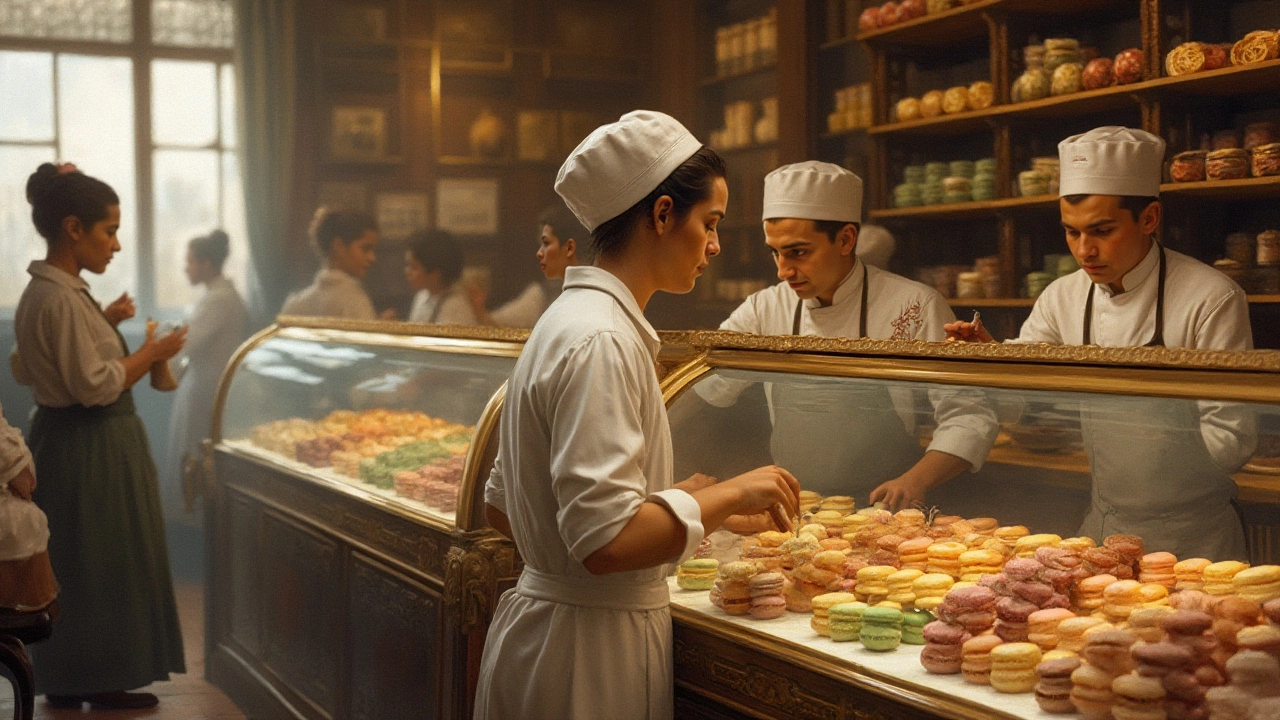
Modern Macaron Renaissance
The past decade has marked a significant resurgence in the popularity of macarons, transforming them into sought-after culinary treasures worldwide. While their classic French roots remain firmly intact, the contemporary era has awakened a new wave of innovation and flair, presenting the macaron in an eclectic and ever-evolving light.
From Traditional to Trendsetting
Modern pastry chefs have taken the time-honored recipe and elevated it with bold flavors and vibrant colors. Today's macaron palettes extend far beyond the traditional vanilla, pistachio, and raspberry. Exotic combinations like matcha with black sesame, rose with lychee, and even foie gras with fig are not uncommon in upscale French dessert boutiques. Such daring concoctions cater to adventurous taste buds and exemplify the endless creativity alive in the world of confectionery.
The Digital Revolution and the Global Spread
Social media platforms, particularly Instagram and Pinterest, have played a pivotal role in the spread of macaron mania. Stunning images showcasing meticulously arranged macarons in cascading towers or neatly lined in rainbow hues have turned these treats into icons of culinary art. Online tutorials and recipes have democratized macaron-making, allowing enthusiasts anywhere to attempt creating these French confections from the comfort of their kitchens.
Innovations and Trends
In keeping with the times, macarons have also evolved to embrace dietary trends and restrictions. Vegan and gluten-free versions have emerged, ensuring that dietary preferences do not impede anyone from joining the macaron craze. Additionally, macarons have found their way into seasonal and themed categories, with pumpkin spice variations in fall, peppermint during winter, and tropical fruit medleys in summer.
The Business of Macarons
The economic impact of this macaron renaissance cannot be overlooked. Bakeries specializing in these confections have sprouted globally, with cities like Tokyo, New York, and Dubai boasting their own macaron gems. Macaron brands like Ladurée and Pierre Hermé have become synonymous with luxury and decadence, influencing the high-end dessert market. According to recent data, the global macaron market was valued at over $1 billion in 2023, showcasing the financial vitality this delicate treat commands.
As the modern macaron renaissance continues, one thing is clear: the macaron is far more than a passing trend. It is a testament to the fusion of tradition and innovation, remaining as relevant and adored today as it was in the courts of historical France. Whether you're a purist or an adventurous eater, there's a macaron waiting to pique your interest.
Secrets to Perfect Macarons
Creating the perfect macaron, with its smooth shell and flavorful ganache, may seem like an elusive art. However, by honing a few key techniques, anyone can master this exquisite French dessert. Let’s take a closer look at the essential steps that bridge the gap between macarons and mediocre replicas.
Mastering the Meringue
The first step to macaron perfection is achieving a meringue that is firm but not overly stiff. Begin with fresh egg whites at room temperature and whisk them until they form soft peaks before gradually adding superfine sugar. This ensures that the meringue provides the strength needed to maintain the macaron's structure.
The Art of Macaronage
The macaronage process involves folding the almond flour and powdered sugar mixture into the meringue. The key is in the folds: gently yet thoroughly, like incorporating clouds into batter. When done right, the mixture should flow like lava—sufficiently fluid to form perfectly rounded circles, but not runny.
Checking Consistency
It's crucial that the batter is neither too thick nor too thin. An easy way to test is to drop a little batter back into the bowl; it should blend back into the rest within about 10 seconds, leaving no trace of the drop.
Perfect Piping Technique
Transfer the batter into a piping bag with a plain round tip. Pipe onto a silicone baking mat or parchment paper, ensuring even sizes by holding the bag perpendicular to the surface. Leave some space between each circle to allow for spreading.
Essential Resting Time
Resting the piped macarons until their tops are tacky is crucial—it forms the sought-after smooth surface that bakes into the macaron’s characteristic shell. Depending on humidity conditions, resting can take anywhere from 20 minutes to an hour.
The Baking Process
Oven temperature plays a critical role. Preheat and position the rack in the center. Bake the macarons at 300°F (150°C) for 12-14 minutes, turning the tray halfway through. Keep a close eye on them—overbaking leads to unwanted browning.
The Fillings: An Artistic Touch
The traditional macaron history is enriched with flavors such as chocolate ganache, vanilla, and fruity jams. Once the shells cool, match them by size and pipe your chosen filling generously, but leave room at the edges for the filling to spread.
The Patience to Perfect
Did you know that letting macarons mature in the refrigerator for 24-48 hours after assembly enhances their flavor profile? This resting period melds the flavors, softens the insides, and creates perfect chewiness.
| Macaron Baking Tips | Details |
|---|---|
| Oven temperature | 300°F (150°C), center rack |
| Whisk egg whites | To soft peaks before adding sugar |
| Macaronage consistency | Flowing, like lava |
| Resting time | 20-60 minutes for tacky shell |
With patience and practice, you’ll soon find yourself making macarons that rival those in the finest patisseries. Each batch is a delicious lesson in culinary history, binding you to a tradition as airy as the perfect meringue and as rich as the heart of a confectionery.
Macarons Around the World
The macaron journey doesn't just end in Parisian cafés. This jewel-like confection has traveled across oceans and borders, enchanting sweet tooths in vibrant ways. What began in the elegant salons of France now graces dessert tables from Tokyo to New York. Let's wander through the global landscape of these colorful delights.
The Japanese Twist
Japan, known for its impeccable artistry in both taste and presentation, has embraced the macaron with open arms. You'll find unique flavors such as matcha, yuzu, and sakura (cherry blossom) that mirror the serene essence of Japanese culture. These flavors provide a refreshing contrast to the typical French varieties, showcasing Japan's innovative spirit.
American Flair
Across the Atlantic, the United States has engineered a bold take on the French dessert. In cities like Los Angeles and New York, bakeries experiment with vibrant colors and inventive flavors. Think red velvet, birthday cake, and even bacon! The American macaron is as diverse as the land itself, often larger and adapted to satisfy diverse palates.
Down Under Delights
In Australia, the macaron's popularity was buoyed by the rise of pâtisseries and multicultural influences. The flavors often pay homage to local ingredients such as passion fruit and lemon myrtle, adding a distinctly Aussie zing to each bite.
Global Flavor Innovations
As macarons travel, every country adds its own flair. In the Middle East, rich pistachio and exotic rose water bring forth an alluring decadence, while in India, hints of saffron and cardamom infuse traditionally European techniques with Asian richness.
Macaron Mania: A Global Obsession
The popularity of macarons can be seen in the growth of boutique stores and chains that specialize in these bite-sized wonders, popping up in major cities around the world. Even their aesthetic appeal has taken social media by storm, fueling collaborations between fashion houses and confectioners.
| Country | Popular Flavors |
|---|---|
| Japan | Matcha, Yuzu, Sakura |
| USA | Red Velvet, Birthday Cake, Bacon |
| Australia | Passion Fruit, Lemon Myrtle |
| Middle East | Pistachio, Rose Water |
The global voyage of the macaron is a testament to its adaptability and universal appeal. Every bite tells a tale of cultural fusion and culinary innovation, making it a dessert that is globally beloved yet locally unique.

